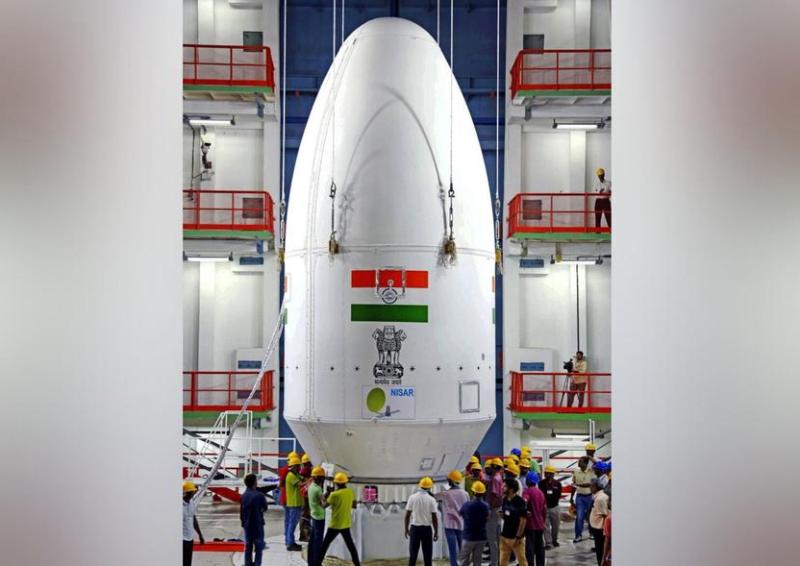An earth observation satellite, NISAR, which has been jointly developed by NASA and ISRO, is set to be launched on July 30 at 5.40 pm from the country’s only spaceport in Sriharikota, Andhra Pradesh.
“The Earth observation satellite jointly developed by ISRO and NASA will be sent into space on July 30 by the GSLV-F16 rocket made in India,” Indian Space Research Organisation chairman V Narayanan said.
Weighing 2,392 kg, the satellite NASA-ISRO Synthetic Aperture Radar (NISAR) is a unique Earth observation satellite and the first to observe the Earth with a dual-frequency Synthetic Aperture Radar (NASA’s L-band and ISRO’s S-band), both using NASA’s 12m unfurlable mesh reflector antenna, integrated to ISRO’s modified 13k satellite bus.
“Each system’s signal is sensitive to different sizes of features on Earth’s surface, and each specialises in measuring different attributes, such as moisture content, surface roughness, and motion,” said NASA.
Putting two radar systems on a single satellite is a unique engineering feat because the two systems require different sets of hardware, and yet have to function in a complementary fashion without interfering with one another.
Costing around USD 1.5 billion, it is the most expensive earth observation satellite in the world, with ISRO contributing Rs 469.4 crore for the satellite.
It will observe Earth with a swath of 242 km and high spatial resolution, using SweepSAR technology for the first time, according to ISRO.
ALSO READ: Indian astronomers find miniature plasma loops in Solar Corona
It will be launched at a distance of 740 km. It can take pictures of the earth 24 hours a day in all weather conditions, and the satellite can detect landslides, aid in disaster management and monitor climate change, Narayanan said.
“The satellite will benefit India, the U.S. and the entire world… it is also crucial for monitoring earth’s natural resources,” he added.















